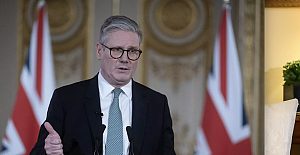Since President Hassan Rouhani, a relative moderate in Iran, took office in August 2013, there has been a surge in executions: at least 537 people have been executed in the past eight months, nearly 200 of them since the beginning of this year, this according to figures compiled by the Iran Human Rights Documentation Centre. That compares with a total for 2013 of 624, according to data gathered by the United Nations. A number of human rights activists and others fear that those who oppose Rouhani and his negotiations with Western powers over the country's nuclear program are pushing the executions to weaken him. Perhaps a little unsurprisingly, not a great deal of coverage is given to this topic in accessible Iranian media.
Hardliners in Iran have long pushed for the execution of those they see as a threat to the system. In 2009, after an uprising against the election of Rouhani's conservative predecessor, the head of Iran's Guardian Council, a body that regularly disqualifies reform-minded candidates for parliament, called for more executions of protestors. The man with the power to rein in extremists in the judiciary and elsewhere, Supreme Leader Ayatollah Ali Khamenei, who has the final say on all state matters, has made no move to put a brake on the rise in executions. Khamenei has given Rouhani his support for the negotiations with the West, and some believe he has sat on his hands over the executions as a counterbalance to appease hardliners.
Iran's judiciary has regularly meted out capital punishment since the Islamic Revolution in 1979. In recent years, it has been second only to China in absolute numbers of prisoners killed, according to Amnesty International. Most are executed for drug offences, but human rights activists say many others appear to be political cases intended to send a message.
There are prisoners from Iran's Shiite majority facing the death penalty for security-related charges or religious violations. But Iran's ethnic minorities, which include Arabs in the southwest, Kurds in the northwest and the Baluch in the southeast, are frequent targets because of concerns that they have separatist aspirations. But for now, Rouhani is pre-occupied with the nuclear negotiations and grappling with economic sanctions, however successes there could give him the political capital to push back against hardliners on issues such as executions.
“There is an understandable fear amongst the conservatives, who got beaten really badly in this election, that if Rouhani is successful, the political setback that they suffered may not be a temporary shift in their popularity or their political power but can end up becoming something more permanent,” according to Trita Parsi, the president of the National Iranian American Council (NIAC)
When President Rouhani was elected to office last year, there was a genuine hope held amongst many in the West, London and Washington most especially, that Iran could be brought in from the cold. It is perhaps ironic that Britain and America should be so optimistic, given their separate and conjoint roles in bringing about the coup in Iran in 1953. Subsequently, there have been many meetings and conferences in Geneva and this has resulted in the lifting of some sanctions and embargoes, but only quite limitedly so.
In President Rouhani and Foreign Minister Mohammad Javad Zarif, you have two articulate and driven men who desire to see their country rehabilitated fully as a world nation, whilst ultra-conservative hardliners strive to stymie these efforts. Unless the Rouhani/Zarif duo and their supporters, can persuade Supreme Leader Khamenei to retire and thereafter dismantle the theocracy in favour of a fully democratically functioning Iran, the rehabilitation of Iran, which could materially stabilise the entire region, will not come into effect.
In the meantime, the executions are likely to continue.


 Prime Minister Keir Starmer's 2025 Easter message
Prime Minister Keir Starmer's 2025 Easter message After Nesil Caliskan a by-election will be held in Jubilee ward in Enfield
After Nesil Caliskan a by-election will be held in Jubilee ward in Enfield Publishing the analysis, Labour’s Cllr Ergin Erbil said Everybody in Enfield deserves basic rights
Publishing the analysis, Labour’s Cllr Ergin Erbil said Everybody in Enfield deserves basic rights Gaza-Israel conflict Statement from Cllr Ergin Erbil, Leader of Enfield Council
Gaza-Israel conflict Statement from Cllr Ergin Erbil, Leader of Enfield Council The European Union called on Turkey to uphold democratic values
The European Union called on Turkey to uphold democratic values Turkish citizens in London said Rights, Law, Justice
Turkish citizens in London said Rights, Law, Justice The Council of Turkish Cypriot Associations Geneva response letter
The Council of Turkish Cypriot Associations Geneva response letter Sustainable Development and ESG, Will This Become the Course for Turkic World
Sustainable Development and ESG, Will This Become the Course for Turkic World The 'Prince of Paris' has impressed in his first EuroLeague season
The 'Prince of Paris' has impressed in his first EuroLeague season Saran Media And Euroleague Basketball Extend Media Rights Partnership for Four More Years
Saran Media And Euroleague Basketball Extend Media Rights Partnership for Four More Years Will Rangers be Jose Mourinho’s next victim?
Will Rangers be Jose Mourinho’s next victim? Jose Mourinho's Fenerbahce face Rangers on Thursday
Jose Mourinho's Fenerbahce face Rangers on Thursday Barclays has become the biggest UK lender so far to cut mortgage rates
Barclays has become the biggest UK lender so far to cut mortgage rates THE SPRING STATEMENT EXPLAINED, UK ECONOMIC OUTLOOK AND GROWTH FORECASTS
THE SPRING STATEMENT EXPLAINED, UK ECONOMIC OUTLOOK AND GROWTH FORECASTS Launch of Made in Enfield gift shop to celebrate local artists and designers
Launch of Made in Enfield gift shop to celebrate local artists and designers Trial used smart Wi-Fi sensors for live building occupancy data to optimise
Trial used smart Wi-Fi sensors for live building occupancy data to optimise

















